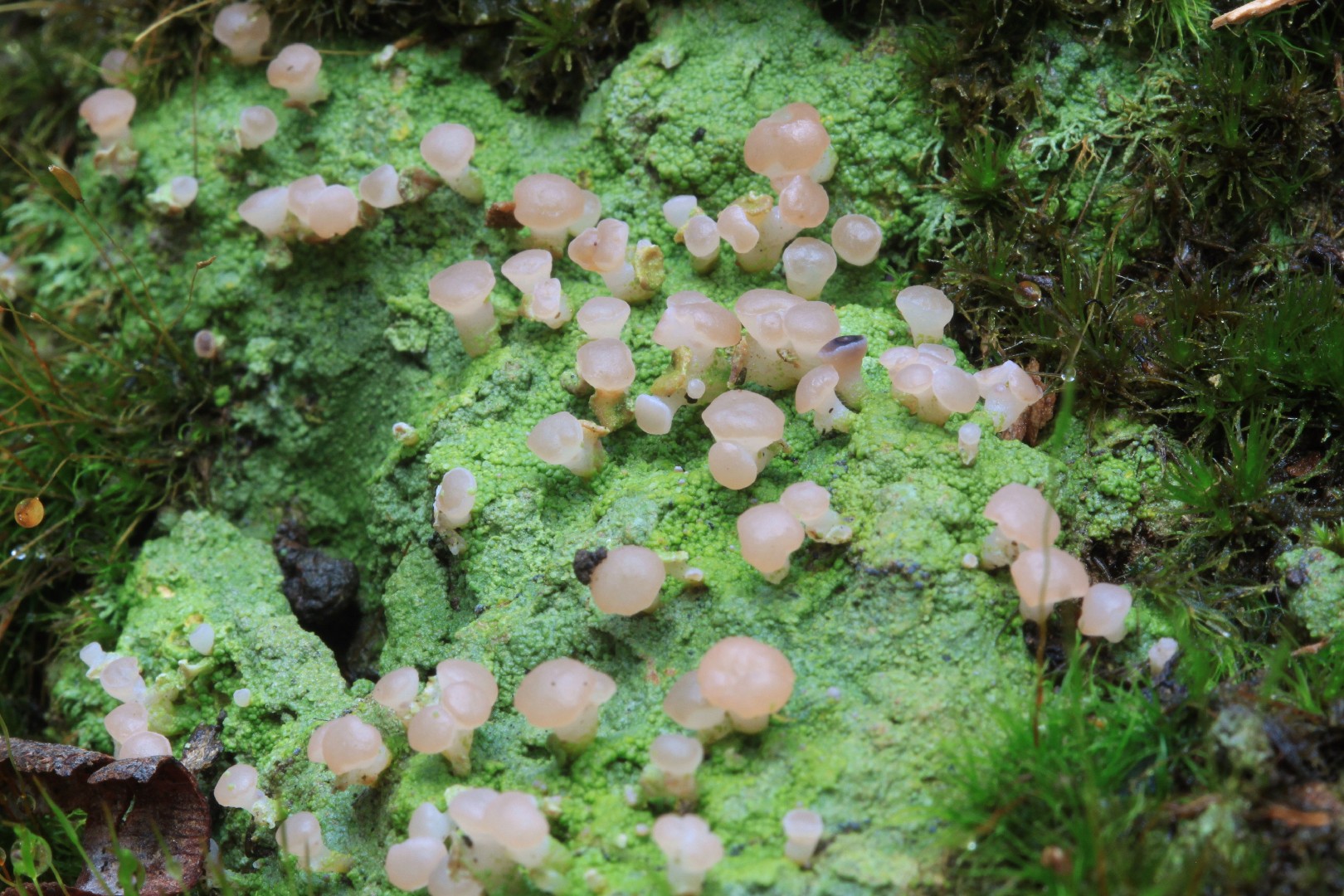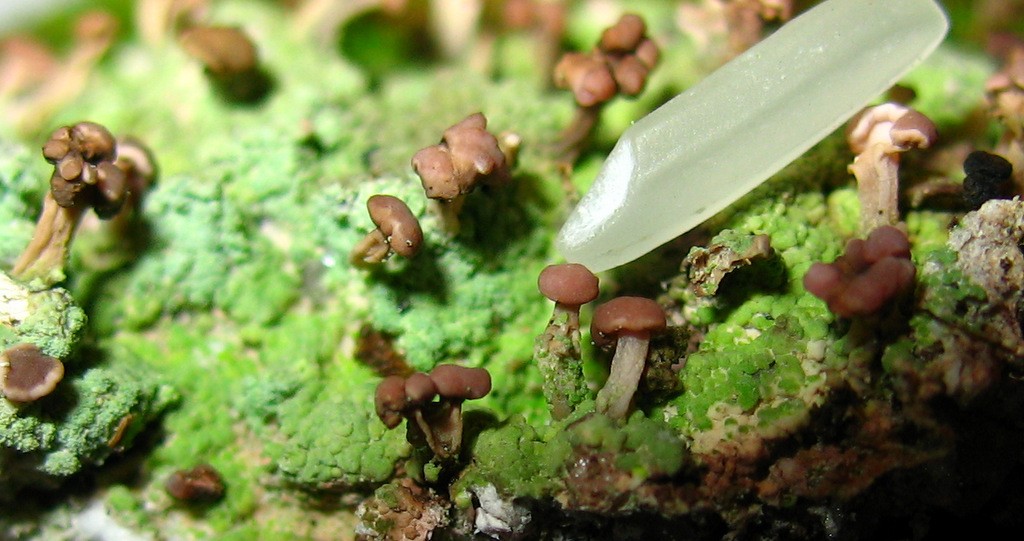Cap lichens
Scientific name: Baeomyces
Cap lichens
Scientific name: Baeomyces
 Photo By karode13 , used under CC-BY-SA-3.0 /Cropped and compressed from original
Photo By karode13 , used under CC-BY-SA-3.0 /Cropped and compressed from original Description
Cap lichens is a captivating group of lichens known for their small, often button-like fruiting bodies that can be quite distinctive. These lichens typically grow on soil, moss, or decaying wood, often in moist, shaded environments such as forests and heathlands. A notable feature of cap lichens species is their tiny, rounded apothecia (spore-producing structures) that sit atop slender stalks, giving them a miniature, mushroom-like appearance.
